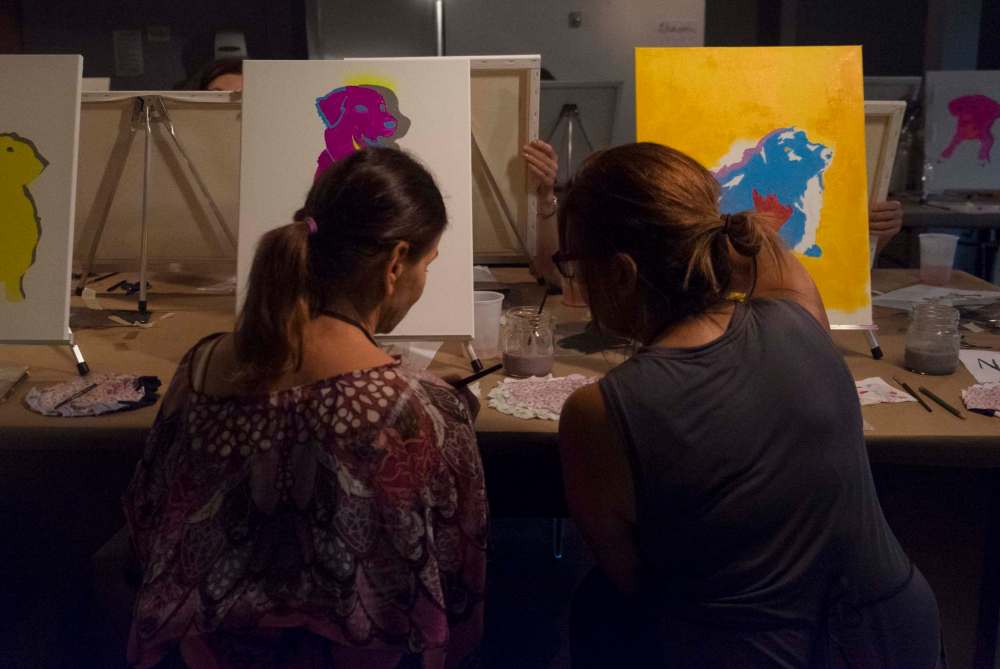WAG turning its back on art program
Advertisement
Read this article for free:
or
Already have an account? Log in here »
To continue reading, please subscribe:
Monthly Digital Subscription
$0 for the first 4 weeks*
- Enjoy unlimited reading on winnipegfreepress.com
- Read the E-Edition, our digital replica newspaper
- Access News Break, our award-winning app
- Play interactive puzzles
*No charge for 4 weeks then price increases to the regular rate of $19.00 plus GST every four weeks. Offer available to new and qualified returning subscribers only. Cancel any time.
Monthly Digital Subscription
$4.75/week*
- Enjoy unlimited reading on winnipegfreepress.com
- Read the E-Edition, our digital replica newspaper
- Access News Break, our award-winning app
- Play interactive puzzles
*Billed as $19 plus GST every four weeks. Cancel any time.
To continue reading, please subscribe:
Add Free Press access to your Brandon Sun subscription for only an additional
$1 for the first 4 weeks*
*Your next subscription payment will increase by $1.00 and you will be charged $16.99 plus GST for four weeks. After four weeks, your payment will increase to $23.99 plus GST every four weeks.
Read unlimited articles for free today:
or
Already have an account? Log in here »
Hey there, time traveller!
This article was published 29/09/2016 (3353 days ago), so information in it may no longer be current.
While the Winnipeg Art Gallery moves ahead with a new Inuit Art Centre, it’s quietly getting rid of a decades-old investment in the community.
Public and private money is advancing the WAG’s planned Inuit centre. It will showcase the largest collection of contemporary Inuit art in the world, provide employment and create a space of inclusion for the Inuit.
But as plans for the Inuit centre mature, WAG administration is dismantling its 80-year-old, publicly accessible art-making program with no public disclosure.

Recently retired from over 20 years of teaching in these classes, I have serious concerns.
In 1995, the WAG Studio, the largest art school at a major Canadian gallery, found a home in a renovated building adjacent to the gallery. In seven studios, classes in a wide range of media and skill levels, taught by practising artists with fine arts degrees, were offered to well over 1,000 adults and children yearly.
Although the Inuit centre will rise from the demolished WAG Studio site, the administration remains publicly mute on alternative plans for classes during the three-year construction period. Planning for studios in the Inuit centre is minimal.
Studio spaces, reduced to four from seven, are touted by WAG director Stephen Borys to be “state-of-the-art.” Art teachers know spacious, easy-to-clean rooms that have storage and sinks are the real necessities. The existing street-level accessibility and welcoming lobby will be gone.
Meanwhile, programming is being gutted. The head of studio programs was replaced by a manager with reduced responsibilities within the Education Department. Well below half of the classes are offered, and the building is open fewer evenings.
The annual adult student show was cancelled due lack of interest and fewer classes. The 17-year-old instructors show was cancelled even though 17 artists had registered. Only instructors’ negotiations and volunteer work allowed one last show in the building. A poster for the show, showing a tiny studio building below the WAG, was too disrespectful. Its renowned artist replied that humour is strength.
The most telling loss is the cancellation of Through the Eyes of a Child, a yearly celebration of the creative spirit of children enrolled at the WAG. In March Borys joyfully invited people to the 30th anniversary display of the work of 680 children. In September, he axed it for good. A theme in this exhibition was “the honesty of a child that emerges through art.” Disclosure was in-house, not transparently public.
Excellent educational standards have been replaced by “maker labs” — quick craft projects taught by volunteers and business owners advertising their supplies — and “paint parties” — social events with how-to projects. These are entertaining and money-making but are of dubious educational value.
Children waiting in the lobby have been offered, instead of drawing supplies, pre-designed adult colouring-book pages denounced by the Canadian Society for Education through Art and its American equivalent. These materials limit children’s imaginations and their expectations of art itself.
The intent behind these reductions in standards and programming, enacted by the head of education, remain unexplained even to staff and instructors, as do the unprofessional dismissals of two long-term, successful instructors.
The board of directors, dominated by businessmen with no art educators and a single Inuit member, indicates a corporate/business operating model driving the administrative agenda. This gain/loss, dated, binary thinking could easily see the dissolution of public programming as a necessary cost of new cultural infrastructure.
More troubling to the Inuit Art Centre creation and Dr. Borys’s vision of it as a site of reconciliation is how this erasing of public programming, with no transparency and accountability, contravenes the crucial ethic in indigenous beliefs that all people live in deeply interwoven communities. This spiritual matrix espouses seven sacred teachings — wisdom, truth, humility, courage, love, respect and honesty — as guiding qualities.
Which of these qualities could help Borys and his team bring more honesty and truth to their community? Would love, courage, respect or humility be beneficial? Wisdom would direct them to seek public input while planning, transparently disclose changes, commit, in public, recorded statements to preserving historic valued programming for the public who fund their endeavours.
Students, past and present, and parents of students could address their concerns to the WAG.
Nan Litchfield Hutchison is a 2016 Manitoba Affiliate Art Educator Award Winner and a member of the Canadian Society for Education through Art.
History
Updated on Thursday, September 29, 2016 7:53 AM CDT: Adds photo





